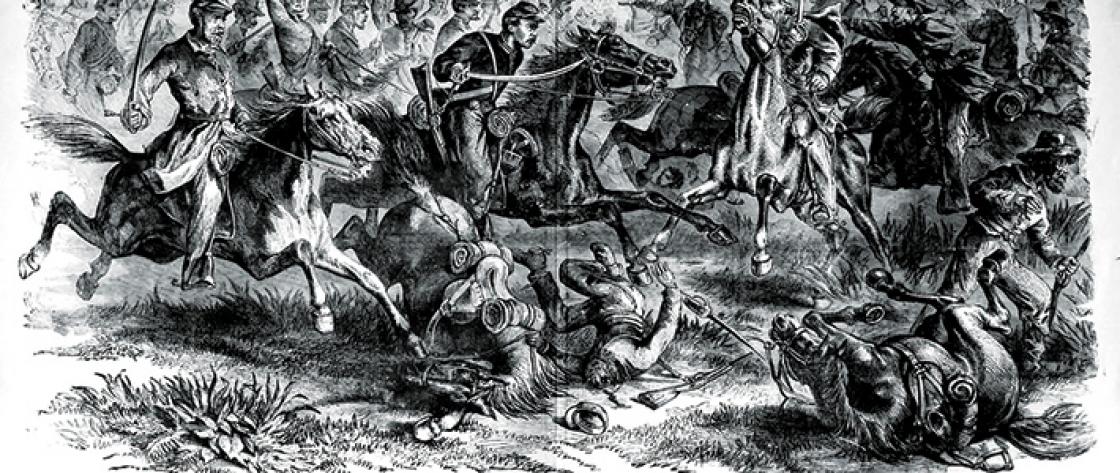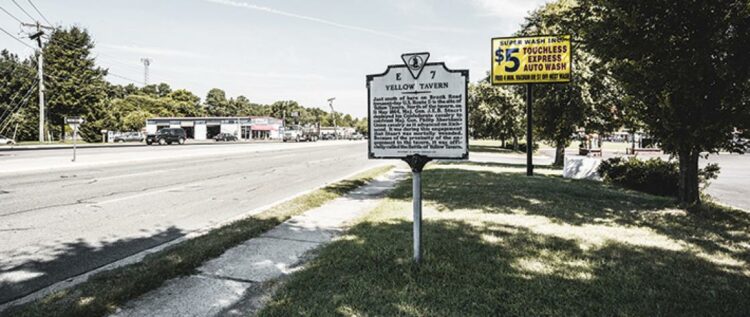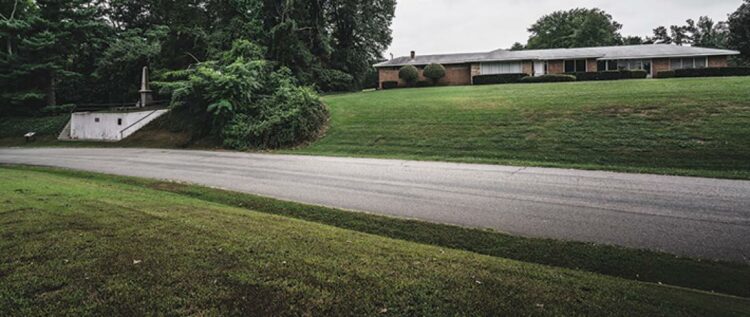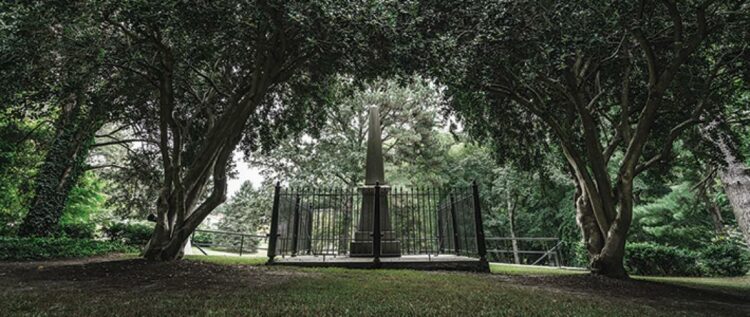About Publications Library Archives
heritagepost.org

Preserving Revolutionary & Civil War History

Preserving Revolutionary & Civil War History


The soldiers likely paid little attention to the building as they prepared to meet the enemy on May 11, 1864. Troopers from Brig. Gen. Lunsford Lomax’s brigade formed a line of battle in the road. Lomax placed the 6th Virginia on his left, the 5th Virginia in the center and the 15th Virginia on the right. Skirmishers were dispatched to the west. Shortly after Lomax deployed his regiments, Maj. Gen. James Ewell Brown “Jeb” Stuart, the commander of the Confederate cavalry corps, trotted up to inspect the position, aware it was only a matter of time before the Federals appeared.
Forty miles to the north, the Army of Northern Virginia and the Army of the Potomac were entrenched at Spotsylvania Court House, engaged in a bloody game of cat and mouse. But, two days earlier, Stuart had discovered the departure of the Federal cavalry corps from the vicinity. Union Maj. Gen. Philip H. Sheridan received permission to move south toward Richmond and took with him his entire force — three divisions commanded by Brig. Gens. Wesley Merritt, David M. Gregg and James H. Wilson. In response, Stuart decided to send Brig. Gen. Fitzhugh Lee’s division, consisting of brigades under Brig. Gens. Lunsford Lomax and Williams C. Wickham, in pursuit. He also borrowed a brigade of North Carolinians commanded by Brig. Gen. James Gordon from Brig. Gen. William Henry Fitzhugh “Rooney” Lee’s division. Stuart himself accompanied the force as it struck out after its foe that afternoon.
Although elements from Wickham’s brigade nipped at his rear guard throughout the afternoon of May 9, Sheridan made steady progress along the Telegraph Road before he turned to the southwest, moving through Chilesburg toward the North Anna River. Shortly after crossing at Anderson’s Ford, Sheridan’s vanguard, Brig. Gen. George A. Custer’s brigade, charged into Beaver Dam Station on the Virginia Central Railroad, where they liberated around 400 Union prisoners bound for Richmond. Custer also recalled the capture of three trains “laden with supplies for the army. In addition, we captured an immense amount of army supplies, consisting of bacon, flour, meal, sugar, molasses, liquors, and medical stores.”
Sheridan set out again early on May 10, with Stuart’s pursuit reaching the remnants of Beaver Dam. Realizing that Sheridan had built upon his lead, Stuart surmised that the best course of action was to intercept the head of the column, rather than follow its tail. He assigned Gordon’s brigade the task of harassing Sheridan’s rear in the hopes that it might slow the Federals. Stuart rode east and rendezvoused with Lee’s division along the Telegraph Road. Together with Lee, Stuart would attempt to intercept Sheridan before he reached Richmond.
The Union commander, however, was not interested in an attack on the city. Sheridan set a leisurely pace in the hope that Stuart might find him and offer battle. Despite the warm spring weather and choking dust, his men rode on, only making camp for the night after crossing the South Anna River. Stuart had also made good progress during the day and stopped for a few hours of rest near Taylorsville.
Before dawn, the Confederate troopers were back in the saddle and, with Lomax in the lead, riding south once again. Lomax’s brigade passed through Ashland and continued south. As Wickham’s brigade followed, they ran into Col. Henry Davies’ brigade from Gregg’s division. These Federals had been dispatched earlier that morning to wreck part of the Virginia Central Railroad. A brief fight ensued before Davies was driven off and Wickham set out after Lomax.
Around 8:00 a.m., Lomax arrived near the intersection of the Telegraph Road and the Mountain Road, where Yellow Tavern stood just below the junction. Stuart — with hard riding and luck — arrived soon after. He was ahead of Sheridan but outnumbered, and Wickham had still not arrived from Ashland. Operating so close to Richmond, Sheridan would expect the Confederates to fight a defensive battle. Instead, Stuart chose to form Wickham’s brigade on a high ridge just to the north and at a right angle to Lomax. When the Federals appeared, Stuart could use Wickham to strike their left flank.
Meanwhile, Sheridan was also on the move. Beyond sending Davies to Ashland, he had left Gregg to contend with Gordon’s brigade along the banks of the South Anna. Merritt and Wilson, however, resumed the advance southeast along the Mountain Road. About an hour after Lomax had arrived and taken position at the crossroads, the Union advance guard ran into Confederate skirmishers. The great battle that Sheridan wanted was about to begin.
Merritt deployed Col. Thomas Devin’s brigade on the right, Col. Alfred Gibbs in the center and Brig. Gen. George Custer’s brigade on the left. Gibbs and Devin dismounted and deployed to attack. Custer kept two of his regiments in the saddle to act as reserves while his other two joined the battle line. With his preparations complete, Merritt sent his men forward. As the Federals advanced, Lomax’s line erupted, “throwing the lead about us like hail,” according to a trooper in Gibbs’ brigade. “The fighting was very sharp and severe, each and every man being called upon to show the mettle of which he was made” added a member of the 6th New York in Devin’s brigade. Devin’s troopers advanced into the Telegraph Road south of Lomax’s position. This flanked the Confederates and forced Lomax to withdraw.
In an effort to cover the retreat, the 5th Virginia re-formed in the road above its original position. Troopers from the 9th New York of Devin’s brigade, supported by Gibbs, bore down on the Virginians. “The line was extended to the left to get the protection of a depression in the ground, a peach orchard and some farm buildings in that direction and then immediately advanced … overreaching the enemy’s line and having a flank fire on him,” a trooper in the 9th New York wrote of the attack. Overwhelmed, the 5th Virginia was forced to retreat.
Fortunately for Lomax, his men had a position to reform on. As the battle raged below them, Wickham’s brigade finally reached the field from Ashland and deployed on the ridge chosen by Stuart. Since they had not yet arrived when the battle commenced, Stuart was forced to scrap his original attack plan, and now Wickham deployed the 1st Virginia on the left adjacent to the Telegraph Road. The 3rd Virginia, 4th Virginia and 2nd Virginia extended the line to the right. Supporting the 1st Virginia were guns from Capt. William Griffin’s Baltimore Light Artillery. Lomax formed his exhausted brigade on Wickham’s left and opposite the 1st Virginia.
After Lomax was driven out of the Telegraph Road, an uneasy lull settled over the battlefield. Griffin’s battery had arrived in time to lend its fire to the stand of the 5th Virginia and had attracted the attention of George Custer. With the guns now silent, Custer took advantage of the respite and reconnoitered the Confederate position. Although a stream known as Turner’s Run ran at the base of the ridge and could potentially slow an advance, Custer determined that an attack could be made.
Riding back to the Union line, Custer proposed his plan to Sheridan. The focus of the attack would be Griffin’s artillery. To silence the guns, Custer planned to send the 1st Michigan in a mounted charge up the Telegraph Road, with the 7th Michigan formed in column to support the assault. For additional weight, Custer borrowed the 1st Vermont from Col. George Chapman’s brigade of Wilson’s division. Meanwhile, Custer’s 5th and 6th Michigan were to advance dismounted against the center of Wickham’s line. Chapman’s remaining regiments, the 3rd Indiana and 8th New York, would form and attack on the far left of Custer’s Wolverines, opposite Wickham’s right. Gibbs’ brigade was assigned the task of attacking on Custer’s right against Lomax’s brigade.
Sheridan approved the plan, and the regiments formed for the assault. Around 4:00 p.m., Custer, Chapman and Gibbs rolled forward. “As soon as the First Michigan moved from the cover of the woods the enemy divined our intention and opened a brisk fire from his artillery with shell and canister” Custer wrote. Despite the fire and the stream crossing, the 1st Michigan stormed up the ridge toward the Confederate guns. Stuart watched from nearby as the Wolverines punched a hole in his line. Reinforcements, however, were on their way — companies Wickham had detached as reserves prior to the assault. Stuart was exuberant as he watched Company K from the 1st Virginia arrive and drive back the 1st Michigan. He even joined in the fight and opened fire on the retreating enemy.

Then, tragedy struck. Maj. Henry McClellan, one of Stuart’s staff officers remembered, “As they retired, one man who had been dismounted in the charge, and was running out on foot turned as he passed the general and discharging his pistol, inflicted the fatal wound.” The bullet entered Stuart near his stomach and exited his back. The Confederacy’s ultimate cavalier reeled in the saddle as men rushed to assist him. Before he was placed in an ambulance, Stuart turned command over to Fitzhugh Lee. As he departed the field, Stuart desperately shouted to his men who were abandoning the line, “Go back! go back! and do your duty, as I have done mine and our country will be safe. Go back! go back! I had rather die than be whipped.”
Custer watched the repulse of his attack and sent the 7th Michigan and 1st Vermont forward. This assault, along with the unrelenting pressure across their front, forced Lee and Wickham to retreat. Sheridan’s hoped-for engagement had ended in a Union victory.
As the Confederates retreated from the battlefield, Stuart’s ambulance made its way to Richmond. Around 11:00 p.m., it arrived at 206 West Grace Street, a house owned by Stuart’s brother-in-law, Dr. Charles Brewer. In severe pain, Stuart was taken to the second floor, where his condition continued to rapidly deteriorate throughout the following day. That evening, a party gathered in Stuart’s room and, at the general’s request, joined in singing his favored hymn, “Rock of Ages.” At 7:38 p.m. on May 12, 1864, James Ewell Brown Stuart passed away. His inconsolable wife, Flora, wore a widow’s black of mourning until her own death in 1923.
Today, much of Yellow Tavern has been lost to time. Interstate 295 — the northern and eastern bypass diverting traffic from Interstates 64 and 95 around the cities of Richmond and Petersburg — has split the battlefield in two. That highway, which opened to traffic in 1981, occupies the area over which Chapman, Custer and Gibbs attacked on the afternoon of May 11. Likewise, the fields where Merritt engaged Lomax have also been lost to urban sprawl.
Such development is not only detrimental to the land itself, but also to the student and historian. In order to truly understand the fighting that took place on any battlefield, one must be able to walk, study and analyze the terrain. The ground, such as the ridge occupied by Stuart in the last part of the battle, heavily influences commanders and their decisions.
Traces, however, still remain. Parts of the Mountain Road, by which Sheridan approached the battlefield, are now part of a modern road system. One can drive the length of the Telegraph Road that Lomax occupied in the early stages of the fight. Portions of the ridge held by Wickham and Lomax can also be seen.
Despite modern intrusions, the major event that occurred during the battle is remembered. Tucked away in a neighborhood bounded by the bypass, Interstate 95 and U.S. Route 1 stands a monument where Jeb Stuart received his mortal wound. In the early part of the 20th century, the Confederate Memorial Literary Society pushed to have modern U.S. 1 run adjacent to the monument to bring visitors to the site. They could not foresee that, nearly a century later, the highway would bring more growth than battlefield visitors.
The Stuart monument was unveiled on June 18, 1888. Many of his former cavalrymen, including Fitzhugh Lee, then the governor of Virginia, gathered for the ceremony. Flora Cooke Stuart, who had not arrived at the Brewer residence in time to bid farewell to her husband, oversaw the installation of a monument for a man who the inscription describes as “Fearless and faithful. Pure and powerful. Tender and true.” A rededication ceremony was held in conjunction with the battle’s centennial commemoration in May 1964; the site remains owned and maintained by the United Daughters of the Confederacy.
